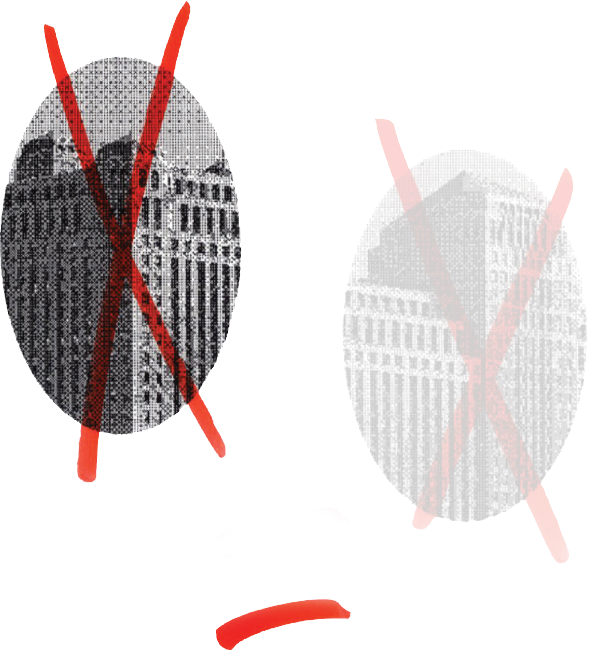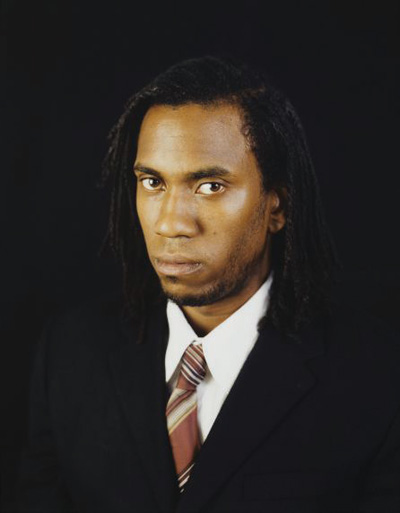Art Chicago/Next Art Fair’s cancellation has left the
art world unphased; what does this mean for EXPO Chicago?
On February 8 of this year, Merchandise Mart sent a brief email to its PR list:
“After a thorough analysis of the art fair landscape, Merchandise Mart Properties has determined not to move forward with the production of the 2012 edition of Next Art Chicago. While Chicago will always remain a cultural tourism destination, is home to a thriving arts community, including galleries, world-class museums, theaters, arts-related organizations, along with thousands of art enthusiasts, it is our conclusion that the great majority of the contemporary art fair market in the United States has gravitated toward the coasts.”
The Chicago art establishment seemed somewhat unmoved by Merchandise Mart’s statement. The once-mighty Art Chicago/Next Art Fair had gone out with a whimper.
The Art Fair scene has bloated over the last 20 years; Jerry Saltz referred to it as “autocoprophag[ic]” in an article in Vulture last year. Saltz was responding to another article written by Adam Lindeman in the New York Observer — the one where Lindeman, a monied critic and collector, argues that art fairs should only be for collectors, referring to Art Basel Miami Beach as a “perverse tchotchke bazaar on steroids.” Art Chicago did not garner such literary creativity. Reading reviews and previews of Art Chicago and its last iteration, Next Chicago, was like reading an obituary for an aunt that no one in the family was especially fond of: Bad at Sports’ preview in 2010 described the energy in Chicago as “a collective shrug/ennui working its way from gallerists to collectors.” A similar article in the Tribune appeared, articulating heavy sighs and begrudged participation. The Chicago Art Fair, in its many forms, seemed terminal.
Once Beloved, At Last Belabored
The history of art fairs in Chicago is an oral history, mired in gossip. “This is really the birthplace of the modern American art fair,” explains Tom Burtonwood, SAIC instructor and a Chicago-based artist and gallerist. “What we see today in New York with The Armory, what we see in Miami with Art Basel Miami Beach, started here in Chicago in the early 1980s with the Chicago International Art Exposition, lead by John Wilson.”
Wilson lead the art fair until the mid-1990s, when a year of competition from two other art fairs forced him out. One of the fairs, run by Tom Blackman, became Art Chicago. The other fair, run by a couple, ended up moving elsewhere. “David Lester and his wife came in, did this show… I think they called it Art Chicago, or Art Chicago ’94, and they did that for a few years — trying to make it work in Chicago, they said ‘to hell with that’ and they went down to Miami, and they founded Art Miami. So that was the beginning of the Miami art fair scene,” says Burtonwood. “That was 10 years before Art Basel Miami Beach was even a twinkling in the eye of the Swiss. That’s significant in a sense… the beginning and the end of Art Chicago. Miami has been the bullet that put Chicago out of its misery.”
One of the key years was 2006. “Dealers were showing up with their crates down in Grant Park [for Art Chicago] and nothing was set up. The city tapped [Merchandise] Mart to take it over,” explains Burtonwood. He continues, “You get the sense that [the City was] just trying to solve a problem. It could have been good for the city to see Art Chicago fail, to be honest. If it failed in 2006, that might not have been the worst thing in the world. Then the Mart might not have gotten into the game and they might not have bought the Armory [show]. After the Mart got their hands on Art Chicago, they went on an art fair buying spree and they bought Armory, Volta and Art Toronto.”
It’s at that moment that Art Chicago began to lose its reputation. “The problem is that the quality of Art Chicago just went into the basement. They were letting anybody in that would pay, I reckon,” says Burtonwood. “Their quality control had gone out the window, because ultimately, they’re a real estate company and they have shareholders to answer to.”
Aron Gent, a local artist and independent gallerist, involved in the organization of the Midway Art Fair, recalls an incident where a local gallerist paid full price for a booth at Next: “He got screwed. He barely made a third back what he put into it. And from then on, he didn’t do a booth because he got burned so bad and it left a bad taste in his mouth.”
Gent was also a vendor last year at Next, “The mood at Next, especially last year was just very solemn. It didn’t have the energy that it started with at the beginning. Everyone seemed to be sour.”
“Art Chicago, the parent show, had gotten a little stale. It had lost its way. Merchandise Mart [has] a lot of art fair interest and a lot of art fair assets, but they didn’t seem to know what to do with Art Chicago and maybe the Art Chicago brand was just too damaged at that point,” says Burtonwood. “What’s your fair bringing [collectors and dealers] if anyone can get in? That’s a killer for an art fair once it gets that reputation.”
EXPO on the Horizon
Though Art Chicago seems dead and buried, much relating to the future of EXPO Chicago is tethered to the demise of Art Chicago. The word “fair” conjures the potential for a spectacle — the first title of the Chicago Art Fair was the Chicago International Art Exhibition, a reference to the great Chicago World’s Fair, which is not lost on organizers of the new EXPO Chicago Art Fair, which runs from September 20–23, 2012.

“There’s wonderful institutional memory [for] these individuals around the world about what a fair at Navy Pier in Chicago means to the contemporary art world,” explains Tony Karmen, President and Director of Expo Chicago. Karmen has been involved with the Chicago Art Fair, in whatever iteration, since the 1980s, serving, until recently, as the Vice President of Art Chicago. He continues, “Chicago is in a unique place because of its history. … We’re remembered in the art world as having a great international fair. But back then there were only two or three fairs in the world; now there are 200 fairs in the world. We will always be judged, rightly or wrongly, on our glorious past. My hope is that we take the best of that past. You can’t recreate that moment, but the best part of that vision is ‘quality not quantity’ design-forward environment, thoughtful curation, lectures, engagement with the community, and connections to the institutions in our city. That, to me, is the model of an art fair in Chicago for many many years.”
Burtonwood is much clearer on what EXPO needs to sustain itself. “The Art World is very snobby. It’s very elitist and it’s very cliquey. If you burn any of [those relationships], it’s not going to work,” he says, “and as much as I’m all for the democratization of the art world, there are certain aspects of the art world that don’t really play to those rules. Art fairs are one of them. They are elite spaces, determined by privilege. People pay for that privilege — in a sense that’s democratic. But you also want to select the best.”
“Having conferences, symposia and professional panels at art fairs is definitely a precedent, explains Tony Karmen. “What we will do a little bit deeper, which is just a Chicago thing, is make sure those conference and panel programs aren’t just about the art world talking to the art world. It’s about the art world hearing about what’s happening within Chicago.”
Burtonwood is pretty clear on the keys to EXPO’s success. “They have to build a wall and they have to build it high. Ideally make it out of gold or marble, and keep the riff raff away. We could have a satellite show in Chicago, but until they define EXPO as being a destination for people to come to Chicago in the first place,[and] unless people are willing to travel from Beijing, Johannesburg, Seoul, Amsterdam, Buenos Aires, Mexico City as galleries, collectors and artists, to come to Chicago in September, it’s a moot point,” he explains, “If they’re not an international fair, then all it will be is a regional fair, and if it’s just a regional fair we might as well have stuck with Art Chicago.”
Karmen agrees, “If we could hit the note of the openness of the Independent with the extraordinary vibe of Frieze, with the sophistication of a FIAC, a Maastrict or an Art Basel, you [will] probably hear me say we’ve hit the exact note that we want.”
What does it mean for Chicago?
“The announcement in September was when a ceiling was established. We were able to announce a … number of top dealers around the world — that sent an important signal to the world that we were serious, that this is not a regional fair. That this is a fair of top quality, and that was the only way that we were going to be presenting this. The response in Chicago has been extraordinary,” says Karmen. “From a civic, cultural business community, there’s an acknowledgement that the fair that Chicago had is a fair that Chicago would love to see again. I think that has a lot to do with extraordinary work of our institutions. There’s a little bit of a Chicago moment happening and I think there always has been.”
Sometimes rich people go to
Miami and they’re feeling
flashy, but not in Chicago.
Chicago is not flashy.
— Aron Gent
The state of the Chicago Art Fair is neither the beginning nor the end of the Chicago art scene. Though the cancellation of Art Chicago/Next Art fair is a blow, it belies more pressing problems that Chicago needs to address, such as the impending Chicago Cultural Plan, the first for Chicago since 1986.
“Look at how the city’s dealing with the art world right now. We’ve got cultural planners from Toronto telling us what we need to do,” says Burtonwood, “We have a Department of Cultural Affairs that’s been stripped of all its assets and all the people that work there don’t know if they’re going to be employed next week.”
Gent sees the problems as being based in a shifting local and global economic climate. “I think [EXPO Chicago] will be better than Next, but I don’t think people are going to sell. … I really still think the problem is getting people to come and buy art. I just don’t think it’s going to happen,” explains Gent. “Collectors have relationships with dealers and they’re very specific. It’s who do you want to hang out with and have drinks with and eat dinners with? You’re not going to go in and get a blind buy on a piece for $10,000 at an art fair — it just doesn’t happen. Sometimes rich people go to Miami and they’re feeling flashy, but not in Chicago. Chicago is not flashy. People need to be taught how to collect — not the high-end art, but the middle range [works].”
“It’s all very interconnected. You see the influence of Art Chicago in art fairs around America and internationally. Maybe Chicago has done its bit for the art fairs. Maybe we don’t need to worry about having kickass fairs. Maybe we should focus on taking artists and galleries down to Miami.”







